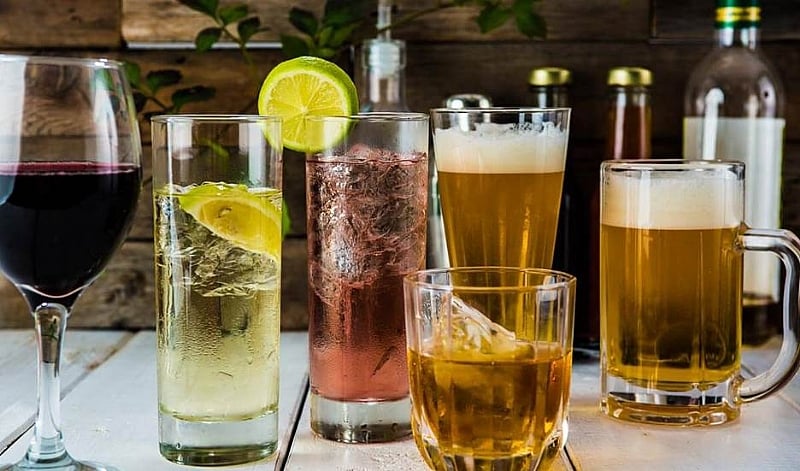Alcohol
A chemical substance found in drink such as beer, wine and liquor. It’s also found in some medicine, mouthwashes household product, and essential oil (scented liquid taken from certain plants) it made by a chemical process called fermentation that used sugars and yeast.
Energy Drink
Functional beverages contain stimulant compounds, usually caffeine, Energy Drink (ED) which is marketed as providing mental and physical stimulation. They may or may not be carbonated and may also contain sugar, other sweeteners or herbal extracts, among numerous other possible ingredients’.
Caffeine is substance that makes people feel alert, however when used with alcohol, caffeine does not reduce the effect of alcohol on the body.
It might make someone feel like you have more energy or you might feel like the alcohol is affecting you less. This could lead someone to drink more alcohol and become more impaired, which increase your health risks
Alcohol and Energy drink with these opposing substances in the body simultaneously. They do not cancel each other out like many think; instead, caffeine can mask alcohols effects and make an individual feel more alert without actually cutting the alcohol content in their system.
Stimulants in energy drinks (ED) can mask the depressant effects of the alcohol drink (AD). Consequences include; drinking more than anticipated and or more than can be safely consumed because the normal onset of sleepiness is delayed.
It passes quickly into bloodstream and travels to every part of the body it effects brain first, then to kidney, lungs and liver. Most of the ethanol in the body is broken down in the liver by an enzyme called alcohol dehydrogenize (ADH) which transform ethanol into a toxic compound.
This is no reason why to mix the organics energy drink with alcohol, like any other soft drink.
Drinking champagne can make you feel euphoric, excited and energetic. Study found that red wine and beer make people feel relaxed, while spirits make people feel sexy and energetic.
In the 2000s, caffeinated alcoholic drink were pre mix drinks that combined alcohol, caffeine,( alcohol mixed with energy drinks (AMED) and sometimes other substances to make someone feel energized (stimulants).particularly to the prominent in the younger population However these drinks usually had more than alcohol than beer.
Caffeine alcohol drinks were heavily marketed to youth. The advertisements connected drinking with activities like action sport or risk taking behavior.
Risk
Poor judgment the combination of alcohol and energy drink can makes someone feel less intoxicated than they are, leading to risky behavior like driving after drinking.
Physical and psychological side effects mixing alcohol and energy drink can cause negative physical and psychological side effects such as heart palpitations, abnormal heart rhythms, and trouble sleeping and felling tense or agitated.
Binge drinking mixing alcohol and energy drinks are more likely to binge drink.
Injuries mixing alcohol and energy drink more likely to injuries or damages to the body.
Kwame Atta 35 years old at Asawasie takes alcohol mixed with energy drinks (AMED) most in the night instead of beer.
Dorathy 25 years old at Dichemso take two cans of alcohol mixed with energy drink just to feel awake and sleepless night.
Abugri 40 years old stay at Krofrom say he has stop sit in the bar since he realize the alcohol mixed with energy drink (AMED).
Advice
Dr. Promise Edem Nukunu CEO of MedNova Clinic states Energy drink contains caffeine, taurine, vitamins and high level of sugar. Caffeine is a drug with unpleasant side effects including insomnia, tremors, nausea, sweating, diarrhea and vomiting.
Says drinking alcohol that is mixed with caffeine can make someone drink more. This could make the effects from alcohol stronger. This could lead to alcohol related health problems, damage to the body and early death. Other concerns with mixing alcohol and caffeine include high blood pressure
Dr. Promise finalized that mixing alcohol with energy drink during adolescence may have lasting effects on hippocampus plasticity, extending beyond the individual effects of each substance. Both substances are harmful on their own, and consuming them together is not advisable.
By Mustapha Bature Sallama
Medical/Science Communicator
[email protected]


